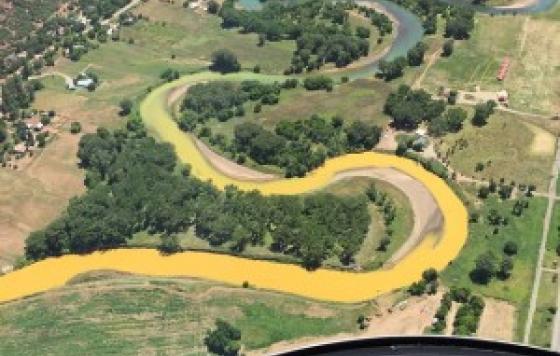
By Alan Farago, Guest Writer and Clean Water Action Member
When the Clean Water Act was passed by Congress forty years ago, I had no idea how important this landmark federal law would be to my work as an environmental activist in Florida. On this important anniversary, I am reminded how far our nation has come, through landmark legislation created in the 1970’s under a Republican administration, and how the original purpose of those laws, including the Clean Water Act, represent the best of America.
I was a freshman in college in 1972. Laws were not necessarily my primary concern, and the environment seemed fine to me. That’s just life at twenty. If I had thought for a minute, I would have remembered walking with grade school friends to the banks of the Providence River in Rhode Island and being awed by the sight of the river on fire. The same thing happened in Ohio on the Cuyahoga. Eventually, this triggered the calls for federal clean water standards.
The Clean Water Act organized the array of economic and citizen interests in preventing pollution from overwhelming our rivers, streams, estuaries and bays. It provided the legal framework through which we attempts to sort out growth and protection, development and mitigation, and the values of a society that often fall short of the aspirations of our Founding Fathers.
I grew up in the summer playing at the bay’s edge in a small town called Touisset. Although I was a child, I recall with vivid clarity the rough-edged baymen who were the last generation, in a lineage stretching back to the Pilgrims, who fed families from the bounty of the bay.
Some of them likely traced their ancestors to the original Tea Party in Boston Harbor. They – like commercial fishermen I respected in Florida—were fiercely independent and didn’t warm to federal involvement in any way. But when pollution interrupted the food chain, they were helpless themselves to protect an historic and honorable way of life.
It is popular, today, to condemn federal regulations and laws like the Clean Water Act. But you have to remember, the states weren’t doing their job keeping the waters clean, just like state agencies aren’t doing the job today in Florida.
There is a tendency to bury the rationale for federal regulations in a kind of fall back position, “one size does not fit all”. The Clean Water Act gives citizens hope that governmental agencies will follow their own laws, holding polluters to account for the cost of their pollution. Sometimes, we the taxpayers are those polluters. One of the most important points of the Clean Water Act is that it allows citizens, if they prevail, to recoup attorney’s fees and litigation costs. This provision of the Clean Water Act is extraordinarily important.
In the 1980’s, I was a young father with a growing family and was struck how the deterioration of Florida Bay that I learned to treasure from the bow of a fishing skiff resembled in many ways what happened in the 1960’s, when the largest coal-fired power plant in New England-- in Fall River, Massachusetts—was built on the other side of the bay from Providence and raised the water temperature through outfalls and the entire ecology of the bay changed.
Clean Water Action was deeply engaged at the time in the water quality battles in the Florida Keys. It was largely the presence of these national cornerstones that gave hope to an entire generation of activists, leaders, and community organizers.
Today I am a board member of Friends of the Everglades. Friends is a proud grass-roots organization, founded by an icon of the national environmental movement, Marjory Stoneman Douglas, in 1969. Marjory was a fierce advocate for “doing the right thing”, and she knew perfectly well that powerful, wealthy polluters like Big Sugar were determined to extract every ounce of leverage from state and local jurisdictions. Only the federal interest in the irreplaceable wetlands that require nourishment by clean water blocks exploiters who nonetheless obtain permits and cover their legal tracks.
In recent years, Friends has used the Clean Water Act in several ground breaking lawsuits to protect the Everglades. Along with our co-plaintiff, the Miccosukee Tribe of Indians, Friends sued the EPA under the Clean Water Act for failing to hold the state of Florida accountable to water quality standards embedded in federal law, prohibiting phosphorous pollution of the Everglades in minute quantities that nevertheless fundamentally change to quality of the faded River of Grass; a national treasure all Americans have rallied to restore. In 2012, our Clean Water Act litigation resulted in nearly $1 billion committed to the Everglades by the state and federal government.
In the early 2000's, we also attempted to use the Clean Water Act to clarify water transfers from a polluted source to a receiving water body, through the NPDES permitting process. Jurisdictions around the nation paid extraordinarily close attention to our suit, that carried all the way to the US Supreme Court. We lost in the 11th Circuit Court of Appeals and subsequently, in our appeal to the US Supreme Court.
The Clean Water Act is not perfect. In the last forty years, environmentalists have waged battles as local and state regulations have fallen beneath the notion that self interest by polluters is a better motivation to clean our water and air than rules and regulations. Anyone who has attended a county commission meeting in Florida, where permitting defaults from one layer of failure to another knows the importance of federal authority.
Like the flag at Fort Sumter in 1861, the Clean Water Act stands. On its fortieth anniversary, I am older and grayer and wise enough to know that if radicals succeed in shrinking government to the size it can be drowned in a bathtub, the water will have to meet federal standards under the Clean Water Act.
Alan Farago is President of Friends of the Everglades and a Member of Clean Water Action.


